INTERFACECRITIQUE (original) (raw)
2023
JOURNAL VOL. 4:
DIAGRAMMATIC OPERATIONS
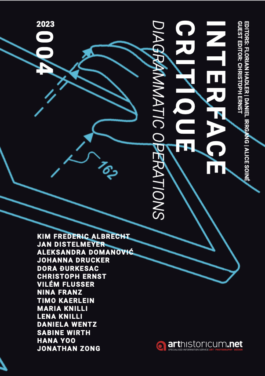
Diagrammatics and interface studies have long been related. With diagrammatics, or diagrammatology, being the study of the epistemic properties of externalized relational signs, the connection between the two fields becomes clear: A graphical user interfaces (GUI), for example, relies on spatial distributions of semiotic elements. Such elements constitute an operational space in a medium and enable inferences and actions (iconicity, cf. Peirce). Connections between semiotic forms of information visualization, its operational principles, historical roots of diagrammatically organized interaction, and practices of designing diagrammatic encounters with technology are among this volume’s topics.
2021
BOOK SERIES VOL. I
TURING COMPLETE USER
RESISTING ALIENATION IN HUMAN COMPUTER INTERACTION
BY OLIA LIALINA
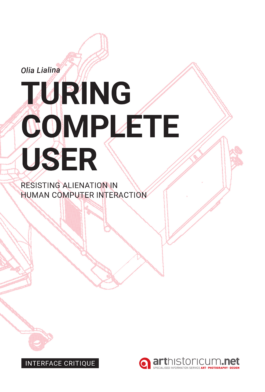
Around 2010, the field of human-computer interaction and the IT industry at large started to invest in reforming their terminology: banning some words and reversing the meanings of others to camouflage the widening gap between users and developers, to smooth the transition from personal computers to “dumb terminals”, from servers to “buckets”, from double-clicking to saying “OK, Google”.
Computer users also learnt to talk, loud and clear, to be understood by Siri, Alexa, Google Glass, HoloLens, and other products that perform both listening and answering.
Maybe it is exactly this amalgamation of input and output into a “conversation” that defines the past decade, and it will be the core of HCI research in the years to come.
Who is scripting the conversations with these invisible ears and mouths? How can users control their lines?
When hardware and software dissolve into anthropomorphic forms and formless “experiences”, words stop being mere names and metaphors. They do not only appeal to the imagination and give shape to invisible products. Words themselves become interfaces – and every change in vocabulary matters.
Olia Lialina is a pioneer internet artist and Professor at the Merz Akademie in Stuttgart. She co-founded the Geocities Research Institute and reflects on new media, digital folklore and vernacular web in her writings, exhibitions, and talks.
2021
JOURNAL VOL. 3:
DEPTH OF FIELD
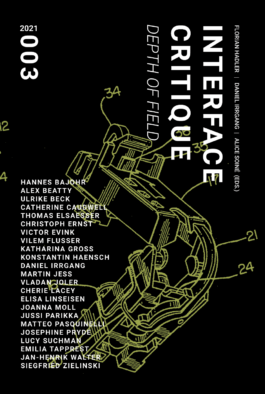
The terminological strength of the film and photography concept “depth of field” can be applied as a powerful leitmotif to think about interfaces. How can we think about and focus on the depth of the interface? Where and how can we find or create new and surprising relations between the surface and its depth? How can we render visible the numerous layers that are hidden behind and inside the interface?
2019
JOURNAL VOL. 2:
NAVIGATING THE HUMAN

Current buzz words such as behavioral programming or persuasive technology uncover the powerful bias of research and development in ICT: its assumption that human behavior in technological settings is something to be designed. The critical examination of such a concept of the human – as yet another systemic component – is the focus of this issue.
2018
JOURNAL VOL. 1:
BEYOND UX
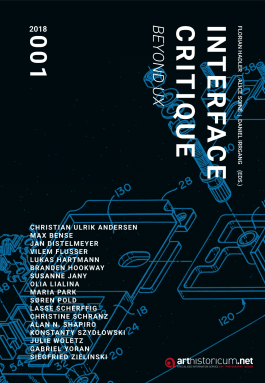
Interface Critique is not interested in the enhancement of usability, in mere ergonomic questions of design and architecture and in the optimization of user orientation or user experience. In order to render the diverse and multifaceted aspects of the interface visible, we need to expand our focus and include politics, history, philosophy, aesthetics, economics, sociology, engineering, coding, architecture, art, design and many more.
2016
CONFERENCE PROCEEDINGS
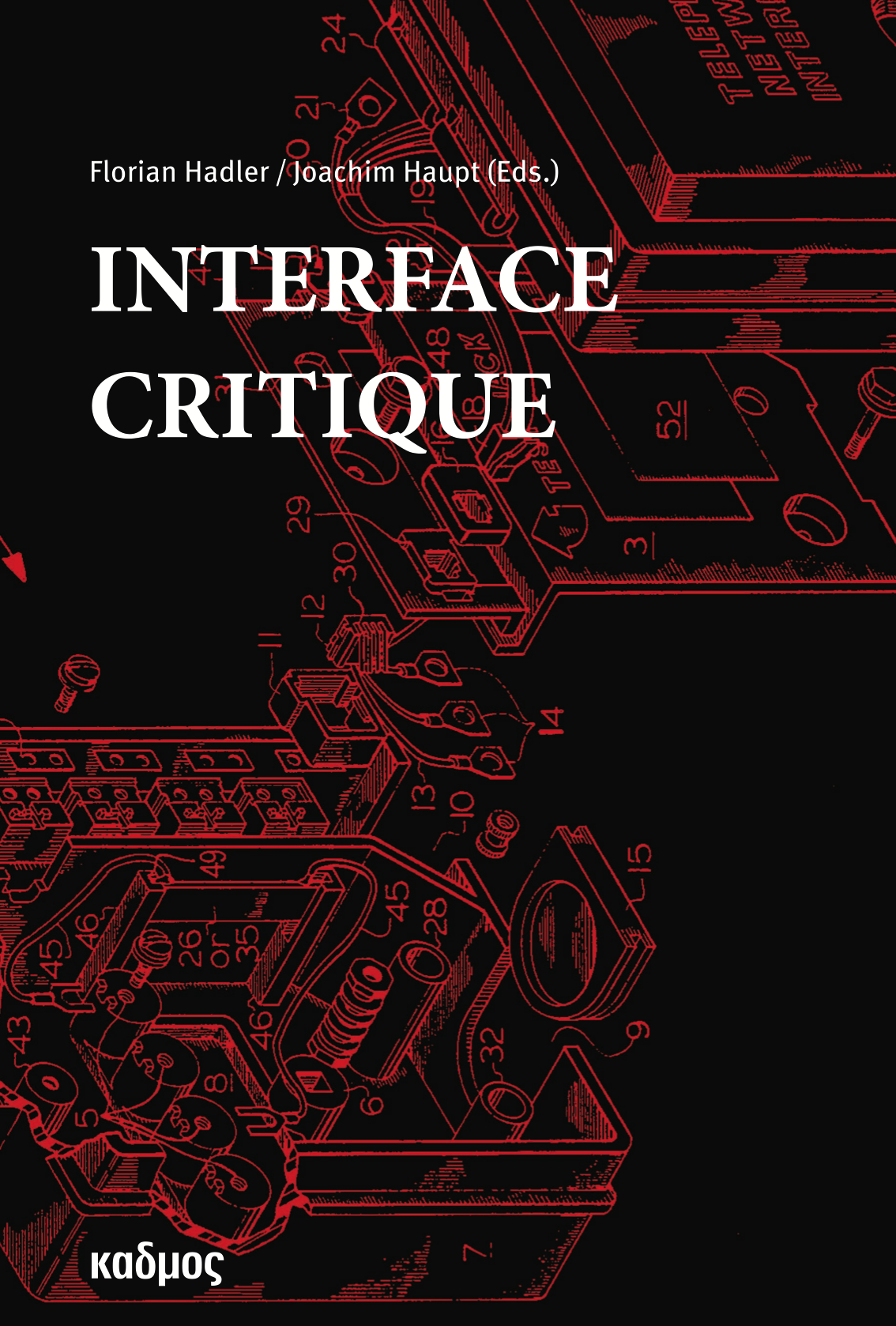
The book INTERFACE CRITIQUE follows up on the initial conference and discusses the interface as a dynamic cultural phenomenon, opening up a multidisciplinary discourse ranging from engineering and coding to design and communications, from digital humanities and philosophy to media studies and literature.

OUT NOW
2023
JOURNAL VOL. 4:
DIAGRAMMATIC OPERATIONS

Diagrammatics and interface studies have long been related. With diagrammatics, or diagrammatology, being the study of the epistemic properties of externalized relational signs, the connection between the two fields becomes clear: A graphical user interfaces (GUI), for example, relies on spatial distributions of semiotic elements. Such elements constitute an operational space in a medium and enable inferences and actions (iconicity, cf. Peirce). Connections between semiotic forms of information visualization, its operational principles, historical roots of diagrammatically organized interaction, and practices of designing diagrammatic encounters with technology are among this volume’s topics.
2021
BOOK SERIES VOL. I
TURING COMPLETE USER
RESISTING ALIENATION IN HUMAN COMPUTER INTERACTION
BY OLIA LIALINA

Around 2010, the field of human-computer interaction and the IT industry at large started to invest in reforming their terminology: banning some words and reversing the meanings of others to camouflage the widening gap between users and developers, to smooth the transition from personal computers to “dumb terminals”, from servers to “buckets”, from double-clicking to saying “OK, Google”.
Computer users also learnt to talk, loud and clear, to be understood by Siri, Alexa, Google Glass, HoloLens, and other products that perform both listening and answering.
Maybe it is exactly this amalgamation of input and output into a “conversation” that defines the past decade, and it will be the core of HCI research in the years to come.
Who is scripting the conversations with these invisible ears and mouths? How can users control their lines?
When hardware and software dissolve into anthropomorphic forms and formless “experiences”, words stop being mere names and metaphors. They do not only appeal to the imagination and give shape to invisible products. Words themselves become interfaces – and every change in vocabulary matters.
Olia Lialina is a pioneer internet artist and Professor at the Merz Akademie in Stuttgart. She co-founded the Geocities Research Institute and reflects on new media, digital folklore and vernacular web in her writings, exhibitions, and talks.
2021
JOURNAL VOL. 3:
DEPTH OF FIELD
The terminological strength of the film and photography concept “depth of field” can be applied as a powerful leitmotif to think about interfaces. How can we think about and focus on the depth of the interface? Where and how can we find or create new and surprising relations between the surface and its depth? How can we render visible the numerous layers that are hidden behind and inside the interface?

2019
JOURNAL VOL. 2:
NAVIGATING THE HUMAN

2018
JOURNAL VOL. 1:
BEYOND UX

2016
CONFERENCE PROCEEDINGS

